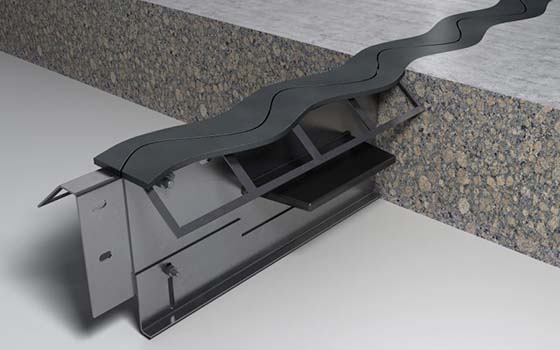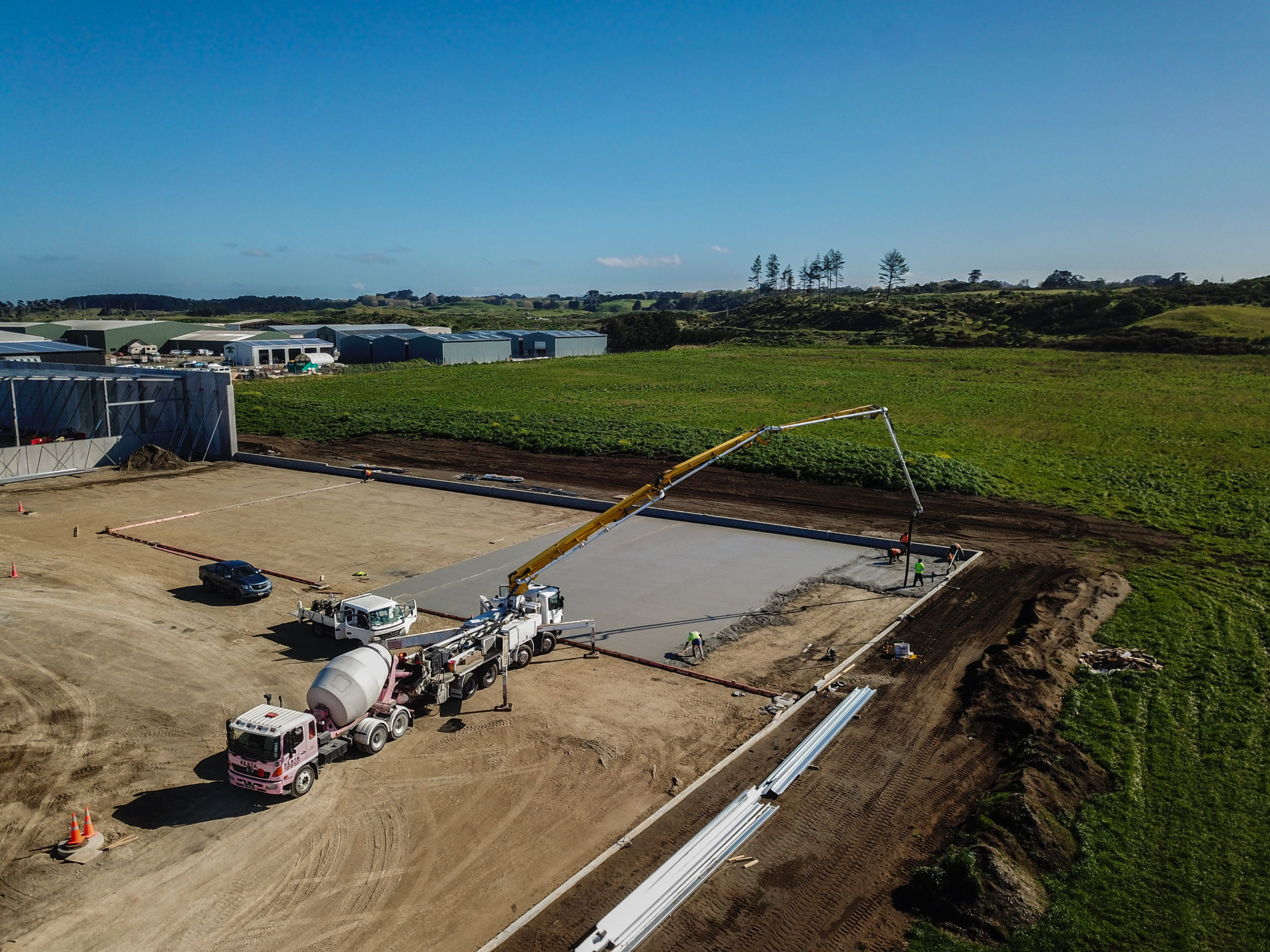Traditional concrete is made from sand and aggregates mixed with Portland cement. The cement, sometimes incorrectly referred to as ‘concrete’, is in fact a separate element of the concrete mix itself. Cement (portland) is a manufactured glue binding agent that begins to set hard with the introduction, and then evaporation of water.
In the case of geopolymer cement, an alkali is used to kick off the chemical curing process. The hardening process continues near indefinitely over the life of concrete, but around 90% of final hardness is achieved in timeframes of a few days to a few weeks depending on atmospheric and initial mix conditions.
The most common cement used worldwide, is known as portland cement, and has essentially been the founding product of modern construction, worldwide, during the modern industrial age of humans. Our society is built from the use of portland cement mixed with stone and sand to form what we know as concrete.
Portland cement is made from the firing of mainly lime and clays, at extremely high temperatures (sintering), to modify its chemical properties. Once this process is done, often at temperatures over 2000 degrees fahrenheit, the cement is suitable to be used with aggregates (sand, gravels, stones) and water to form concrete for use in building.
The modern issue with creating portland cement, is that the process requires the extraction of firstly lime, then the use of very high heat, and finally, the use of additional chemicals – that produce undesirable environmental side effects. Concrete is said to be responsible for around 7% of the world’s total CO2 production, according to research out of Berkeley University in California.
How is it so high? Firstly, the firing process is mainly done with fossil-fuel fired kilns that produce many billions of tons of CO2 that ends up in the atmosphere. The coal is both environmentally unsound to firstly extract, but also to ship about and then burn. It has a very high carbon footprint that is an unwelcome externality of production to today’s thinking. It is measured that producing a ton of cement, produces about a ton of CO2 into the atmosphere.
There are also human concerns about the impact of mining activities in many third-world countries that produce not only the coal itself, but also a lot of cement used in worldwide construction activities. These concerns are around workplace conditions, exposure to workplace harm and the life cycle impacts of these activities on natural environments and communities by large multinational corporations.
Enter geopolymer concrete, the ‘old-yet-new’ alternative, purported to not only tackle some of the above issues with portland cement based concrete, but also offer increases in performance and longevity of the concrete – some of which can be proven through structures many thousands of years old. Let’s get to that soon – but first let’s tackle exactly what this alternative actually is.
Geopolymer concrete is a mix made with geopolymer cements – that makes use of less heat (than portland) and can make use of industrial waste products to achieve its properties. Not only do these waste products offer ideal chemical and intrinsic properties to the cement, they also reduce the need to be turned directly into waste, thereby creating the ideal opportunity to make use of otherwise wasted resources – while at the same time lowering the environmental and carbon impact of the initial commodity production in the first instance.
So what are the advantages of geopolymer concrete, given that we have established its greener credentials. Are there any performance or usability advantages? The answer is a firm yes – geopolymer is known to offer increased durability over traditional concrete. Which is many applications, and when combined with modern reinforcement products such as fibre, can offer much more suitable solutions to projects that may receive a high wear factor – such as ramps, docks, bridges, roads, industrial yards and floors etc. In applications where corrosion is a concern – such as in or near marine environs – geopolymer with appropriate fibre reinforcing, will outperform steel-reinforced portland based concrete by a significant margin. In addition, areas that are suspect to regular freeze-thaw cycles, harsh weather events (seawalls or desert locations) like storms and hurricanes – will benefit from the increased durability of geopolymer concrete.
Geopolymer type solutions have been used on and off by humanity for many thousands of years to form enduring concrete structures. There is theory – although not universally proven – suggesting the Pyramids of Giza were built from essentially an early form of geopolymer; manufactured and cast stone. The Egyptians are thought to have used this process for building blocks, rather than perfectly cut and quarried stones, moved by man power and lifted into place. This theory makes a lot of sense given the vast distances between quarries and the build site – and also the fact that the metal tools of the time – soft copper – were unlikely to be able to have cut virgin rock with the precision of the final result. Cast geopolymer is a very sound theory especially given that forms and material would have been far simpler to handle into place, then cast, than moving giant pieces of rock themselves.
While debate still exists as to just how much of a role geopolymer concretes played in the Giza project, the fact that the material (if proven to have been cast not quarried) has lasted in excess of 4000 years in an exposed and atmospherically abrasive desert environment is a welcome base for establishing its longevity in use.
Secondly, the early Roman and Greek constructions such as the Pantheon use concrete mixes that much more closely resemble geopolymer than modern fired-lime portland cements. These structures have been proven to last in excess of 2000 years without failure or deterioration – a testament to the enduring nature of the material. Roman and Greek society also made use of these types of concrete for structures built underwater – in seawater – which is still to this day a very challenging environment in which to obtain longevity of over 100 years, using even the most modern of portland concrete mixes. The geopolymer mixes were cast into wooden forms that then cleverly used the surrounding seawater as the alkaline required to cure the cement in-situ.
So how does geopolymer concrete differ in creation, application and usage to portland cement based concrete? There are key differences, and this helps to explain its historical use in the times of pre-industrial humans. It also helps us pave the way to a greener concrete future, by recognising some of the properties of geopolymer that sit better with today’s consumers and societies in comparison with incumbents.
Portland cement requires far more heat to sinter the lime and clay mix initially, and also has a far different curing process. As noted earlier, the creation of this heat is a significant issue in terms of sustainability. Geopolymer however, can be made and cured with much more rudimentary processes and materials, with greater success, and with much lower heat inputs.
For example, ancient Romans used volcanic ash sourced from Naples, mixed with lime (baked at around 900 celsius which is an easier ask with simple furnaces) to create their cement base. When this was exposed to seawater (the alkaline salts) the mixed cured and bonded very hard. This early geopolymer mix is proven to have far greater durability in saltwater environments, in addition to atmospheric durability and general longevity. Geopolymer uses an alkali to activate the concrete hardening process and a much lower temperature to fire the lime in the first place. It can set in a wider variety of ambient temperatures and is also friendlier to transport once wet mixed – as it will not begin curing to the alkali is introduced.
In comparison, portland cement requires a very high (circa 1500degress celsius) initial firing temp and extended exposure to heat to sinter the crushed lime and clay mixes, it then also requires heat (as it is much more sensitive to ambient heat for ideal cure) to cure once it is mixed with water and aggregates into the concrete mix. Once the dry elements of portland cement concrete are mixed with water – it begins to cure – so the wet mix is very time sensitive in terms of when it can be poured and placed. This usually presents timing issues in construction and can also lead to poor outcomes if outside factors influence or impact the best times to pour.
Modern geopolymers, as mentioned near the start of the article, can make use of by-products of industrial production as base elements of the mix. Some of these include fly ash (the leftover product of burning coal) and industrial blast furnace slag – which comes from steel production. Both of these are produced in huge quantities by modern industry, and currently present disposal and storage problems for many countries. For example, mountains of fly ash are being stored in Australia, as mining operations churn through coal at very high rates to satiate demand for natural resources. In other places, mining pits and drained lakes are being filled with fly ash in such huge quantities that they can be seen from space.
Geopolymer cement production is one of the few proposed solutions to this waste issue that is economically viable today, but as yet does not have the wide adoption required to bring it about as a staple of modern construction in the same way that portland cement currently is.





